This week I am visiting old family friends, the Hauff and Vanzetta families in Queensland. Christel Schrank took my Mum and Olive and I to visit the River Heads Food Forest, a lush green space in sunny Queensland, located near Hervey Bay and Fraser Island. Christel has created this beautiful food forest with very few resources but a lot of work! Above you can see a 5 star multi-storey insect hotel made from recycled Besser bricks and topped with an infinity bird bath.
I’ve been catching up with old family friends the Vanzettas at their lovely nursery Hervey Bay Garden Centre. It’s time to plant tomatoes up here in the Queensland sunny winter, and Jamie Vanzetta and I were discussing which varieties are best here at this time of year, such as the naturally disease resistant Green Zebra, Money Maker, the quicker growing Blacjk Cherry and the old favourite, Roma.
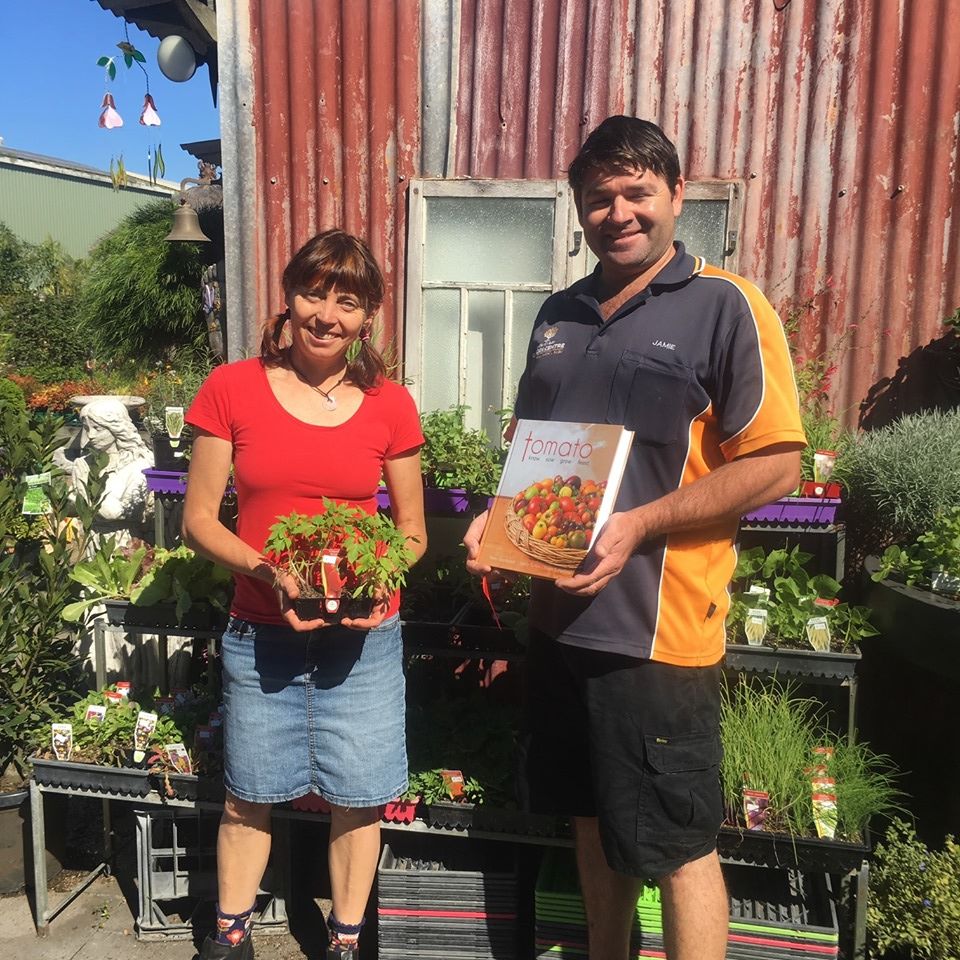
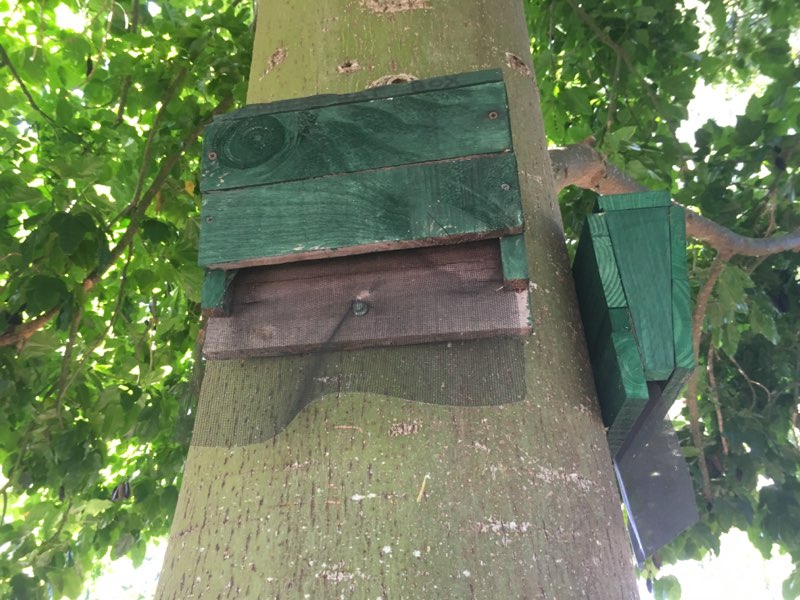
These microbat nesting boxes in the Food Forest are thanks to Christel. Due to habitat loss in this area, installing these boxes assists the diverse species of microbats. Microbats are amazing and some can eat 400 in mosquitoes in a night. See if these microbat species live near you
Microbat box building instructions
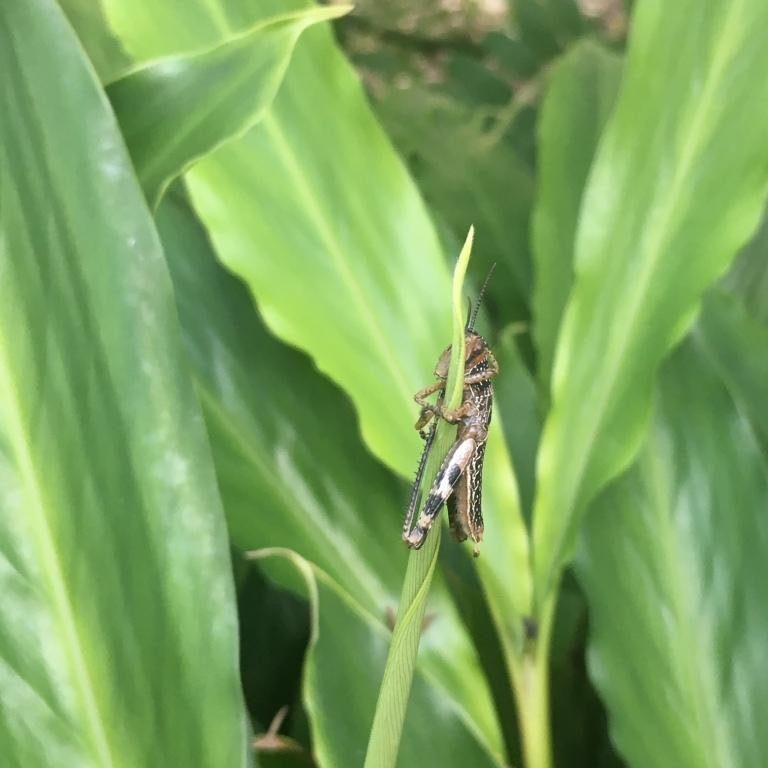
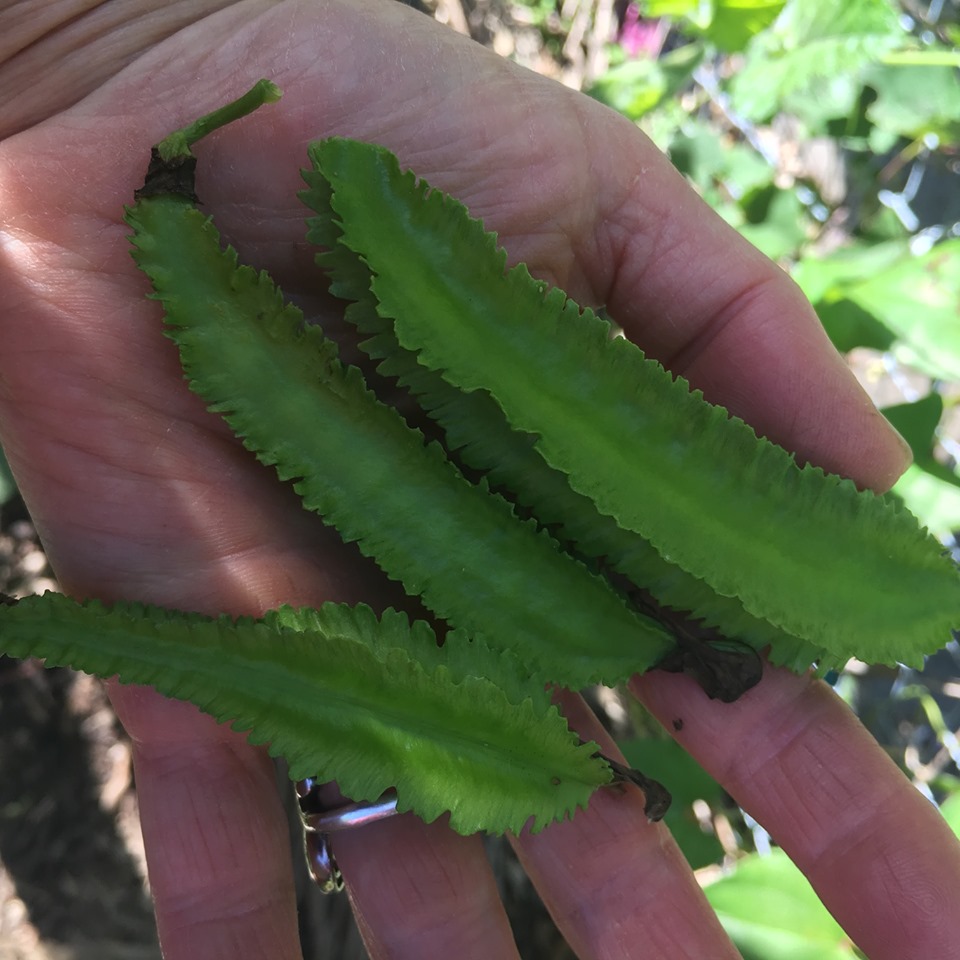
The Food Forest has an adjoining community garden and cafe, and this compost tumbler is used to process the cafe waste as well as waste from the Food Forest and community garden. Christel has found that after the initial filling up with waste, she can add a bucket or so each week for quite a while afterwards, making using these tumblers more useful for regular use.

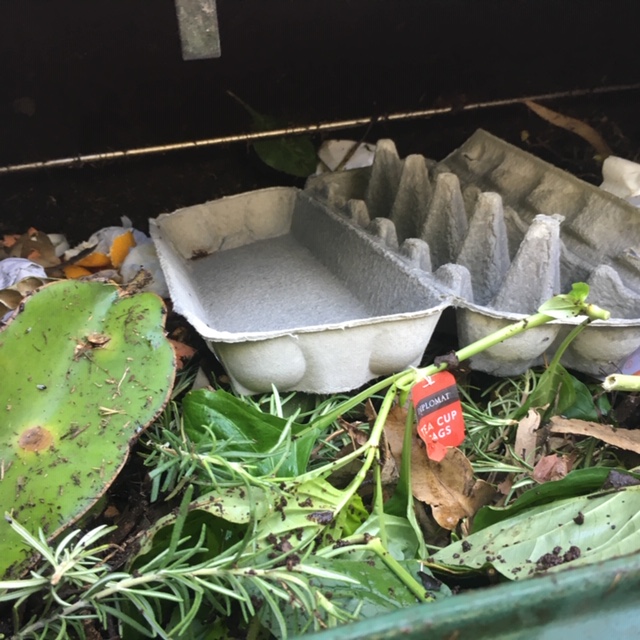
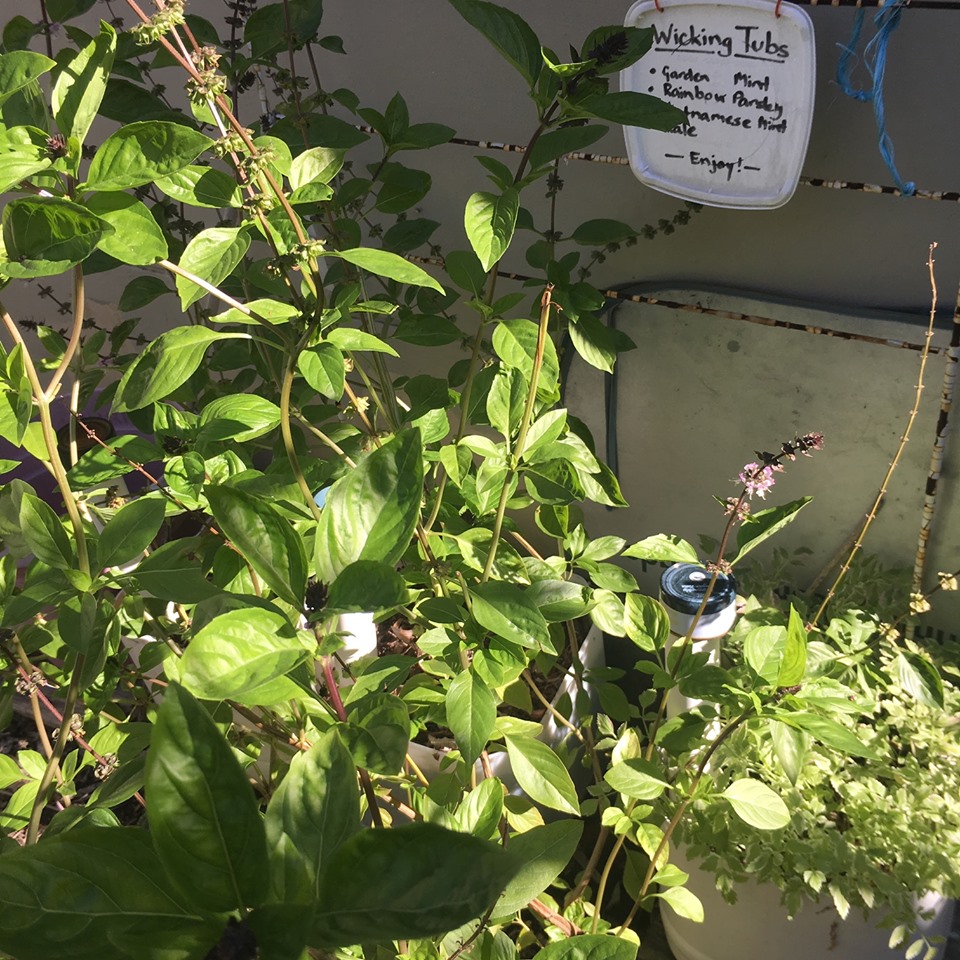
Wicking tubs are the same design principle as wicking beds, but on a smaller scale. The plants are growing so successfully in the tubs it is difficult to make out all the design features. Christel has planted them out with moisture loving herbs such as perennial basil, variegated rainbow parsley and garden mint. I’ve been looking for something to do with leftover plastic containers after using all the Seasol and other goodies, so this is one I’ll adopt!
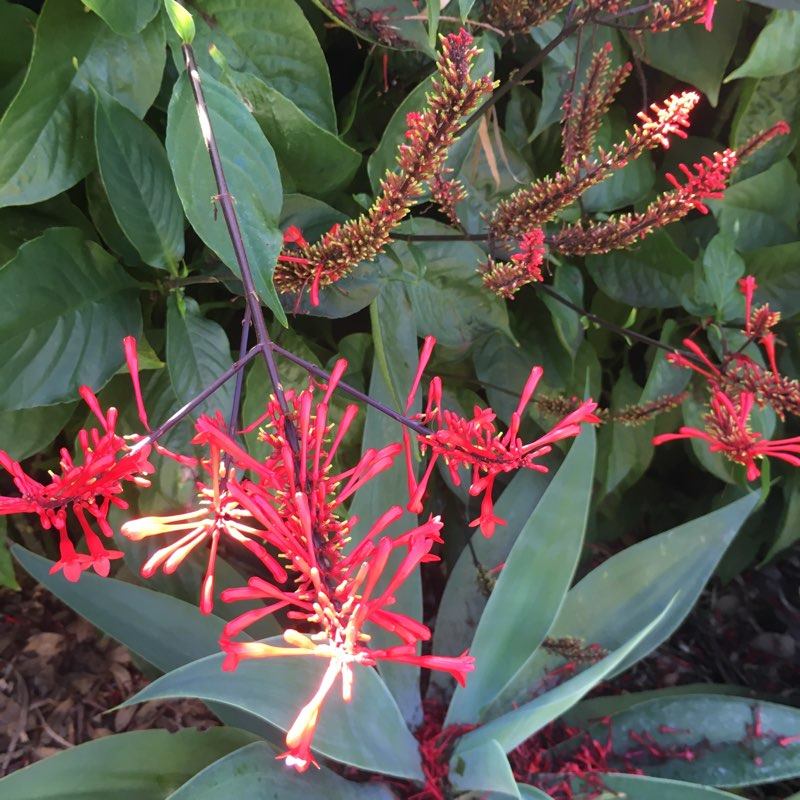

Flowering plants provide food for the beneficial insects in the garden. The Betel leaf plant (Right hand image) has delicious edible leaves, used raw as mini wraps and grilled in Asian cuisine.
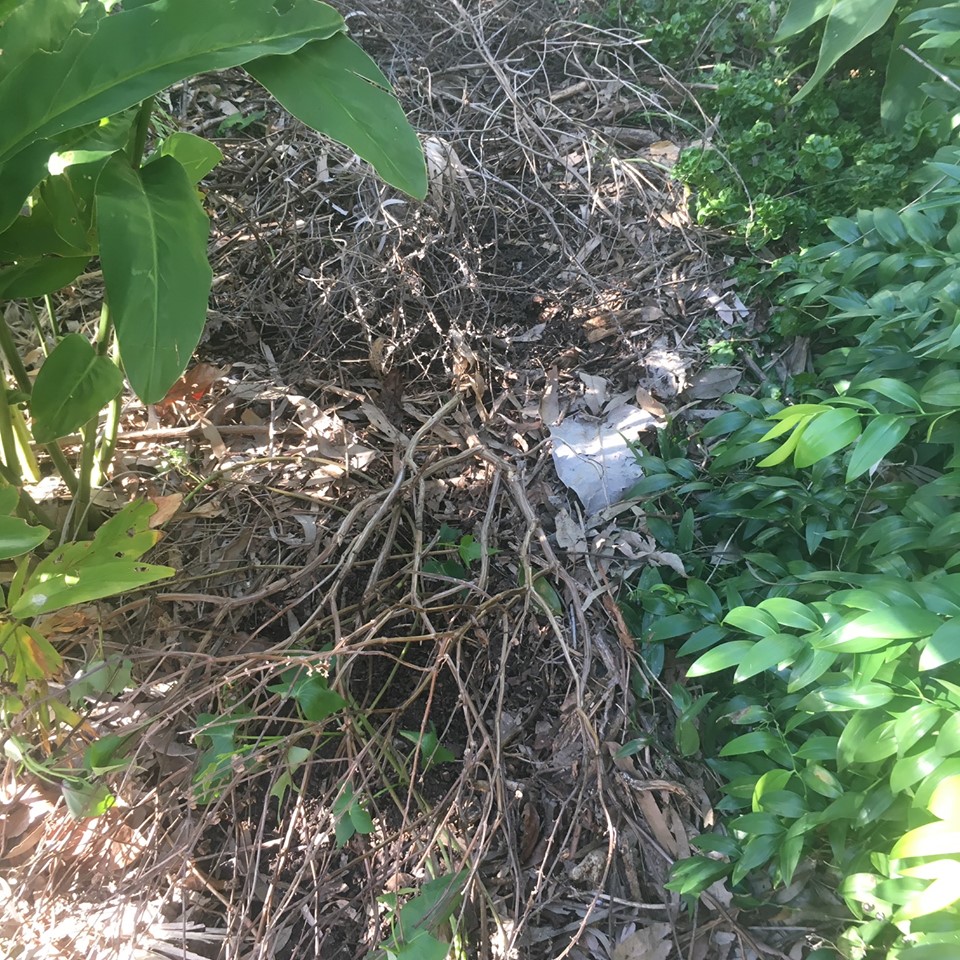
To prevent birds from scratching up and eating newly planted seeds, Kristel has laid branches over the earth. She says it also keeps people from walking over this area while the new seedlings establish – a great idea in public places such as Food Forests, which are so different to gardening in our own home gardens! I love this idea and will use it and suggest it to others. Finding ways to creatively guide garden visitors without making them feel unwelcome is a challenge I’ve encountered in my own nature strip garden too! Keeping birds from damaging new plants without discouraging them from eating insects is a winner.

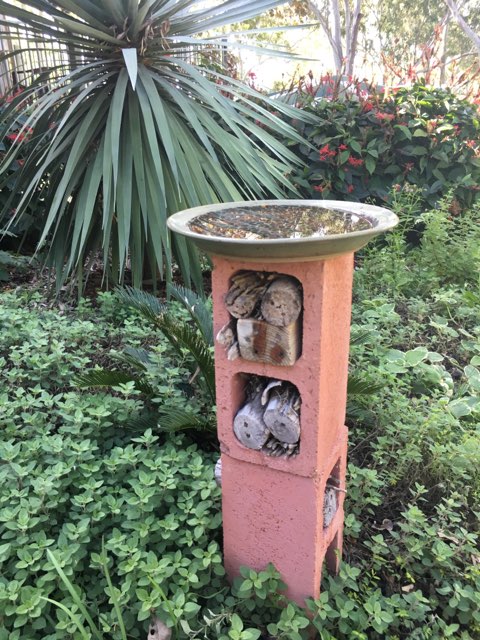
Recent Comments